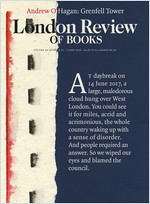The first theater class I took was Oral Interpretation taught by the inimitable Esther Smith. If you ask anyone who was lucky enough to know Miss Smith, I bet they would tell you about the profound influence she had on their lives. She certainly did on mine.
The class was on how to work up a part based on a written script, i.e., how to interpret the text and deliver it in a way that conveyed your interpretation. One of the first things she said to us was about the three components of communication. I don’t remember the exact words she used, but basically the originator, the thing itself (book, painting, spoken words, etc.), and the person receiving it.
As a writer, I think about this often. I have control over the first two, but not the third. As a reader, how I understand a story or poem depends on me alone. Well, me and my cache of experiences, cultural contexts, predilections, etc.
I know what kind of experience I intend my story or poem to create in a reader, but they may get something entirely different from it.
What brought the idea of art as communication to mind was a recent review by Thomas Meaney in the London Review of Books, Vol. 45 No. 4, of an exhibit of George Grosz’s work at the Staatsgalerie in Stuttgart.
It actually was an illustration that struck me: Grosz’s Tatlinesque Diagram. You can see a reproduction of it here.
The description by Paloma Alarcó on the website of the Museo Nacional Thyssen-Bornemisza, Madrid, says that the woman is a prostitute, based on her connection to another collage, and says that the collage simply represents contemporary people of various sorts. The title refers to Vladimir Tatlin, a Russian and Ukrainian artist and architect who famously designed The Monument to the Third International, also known as Tatlin’s Tower.
Indeed, in his review Meaney quotes this artist statement from Grosz’s autobiography: “My drawings had no purpose, they were just to show how ridiculous and grotesque the busy cocksure little ants were in the world surrounding me.” Meaney does not mention the Tatlinesque Diagram in the review but does describe “Grosz’s great theme – the domestic horror show of bourgeoisie.”
The collage says something quite different to me. The first thing I noticed was the walking man’s turned head. I thought it clever the way his larger head continued facing forward, while a tiny head inside is turned to fix on a photo of a naked woman. A woman in the foreground has just passed him. She, too, is naked, though wearing a hat, a ribbon around her neck and thigh-high stockings. She’s furtively glancing back at the man who just passed her. We see a grinning man approaching her, his head shown in outline like that of the larger head of the other man. We are left to imagine what his inner head is doing.
What struck me immediately was how accurately this collage depicts the way it feels, as a woman, in a public space where men are also looking at depictions of naked women. It might be a calendar on the wall or something on a computer screen or even a cartoon. No matter how fully clothed you are, you immediately feel naked.
It doesn’t matter if that’s what Grosz intended or if he just meant to depict the world around him. That’s what the collage conveys to me.
The writing life is one full of rejections. I try to remember how subjective the reader’s opinion is. We all bring different experiences and mindsets to what we read. The first piece of mine that won an award is a good example. In the same envelope with a letter saying the piece had won first prize (yay!) was the critique I had paid extra for—obviously written by someone else—saying it was one of the worst pieces they’d read, and that I should take an introduction to creative writing course.
All we can do as a writer, actor, or artists, is create as best we can and put it out there in the world. Sometimes a reader will actually see something in a story or poem that I didn’t intend but am delighted to have pointed out to me. Here are two quotes from authors, responding to a request from a student as to whether that ever happened to them:
Ralph Ellison: “Yes, readers often infer that there is symbolism in my work, which I do not intend. My reaction is sometimes annoyance. It is sometimes humorous. It is sometimes even pleasant, indicating that the reader’s mind has collaborated in a creative way with what I have written.”
Joseph Heller: “This happens often, and in every case there is good reason for the inference; in many cases, I have been able to learn something about my own book, for readers have seen much in the book that is there, although I was not aware of it being there.”
Has something you’ve created ever been understood by others in a way you didn’t intend?


